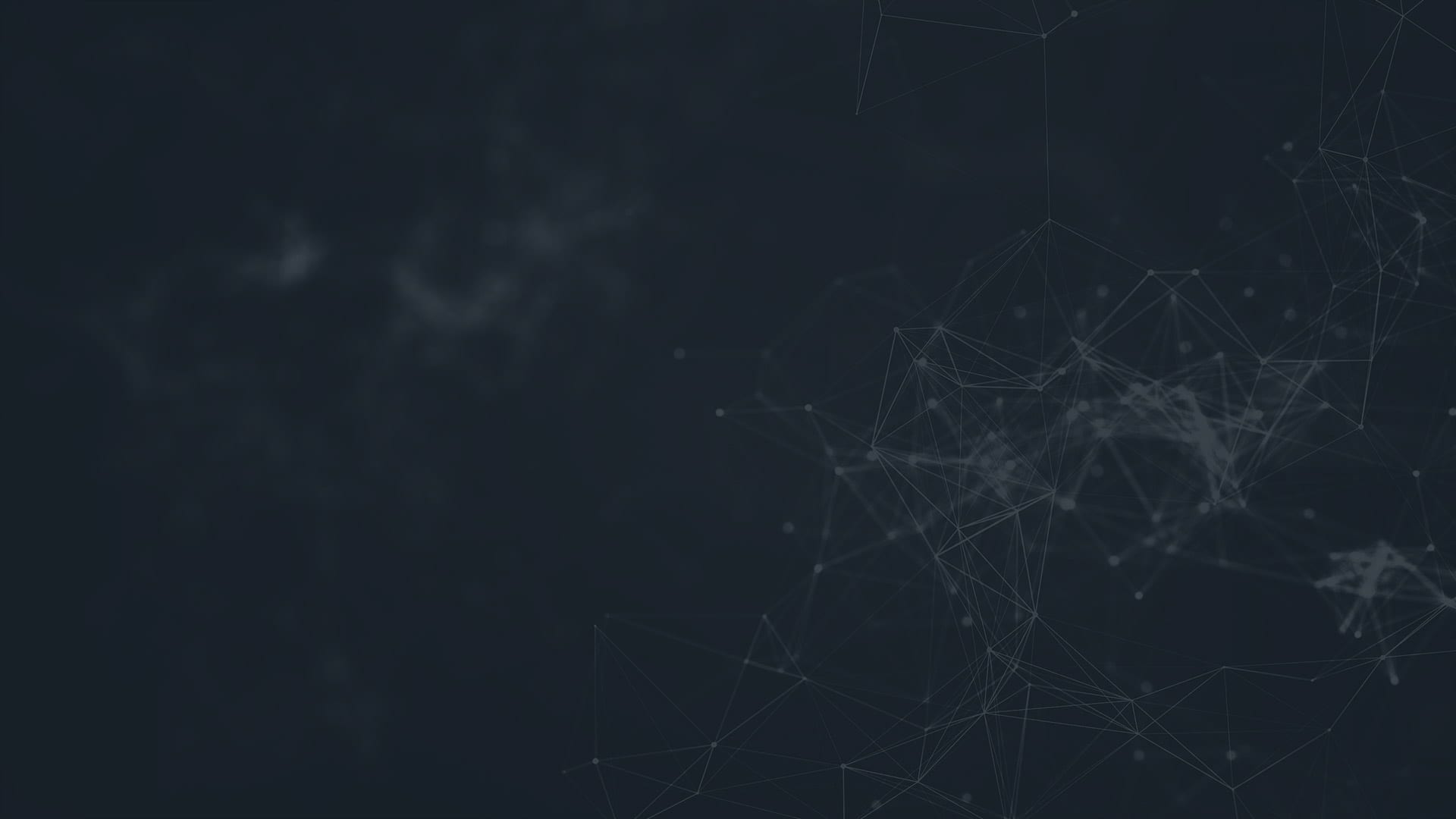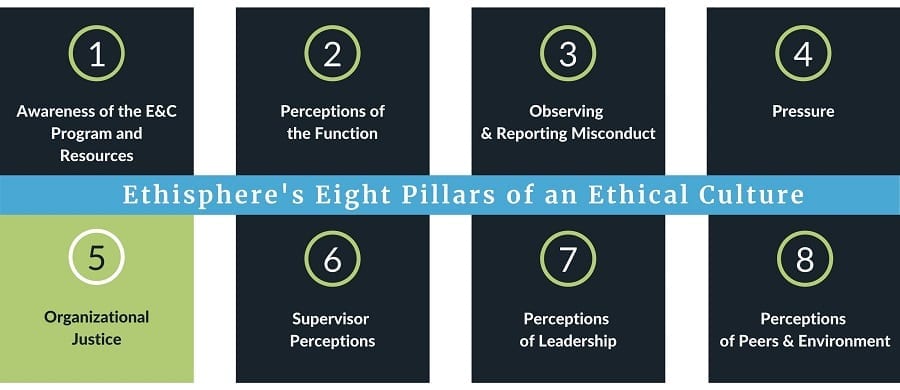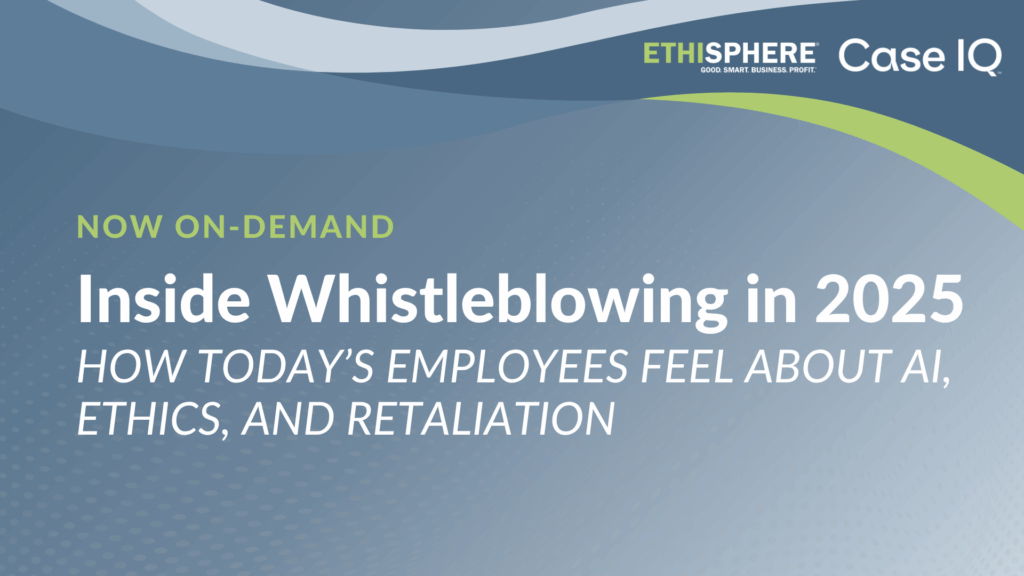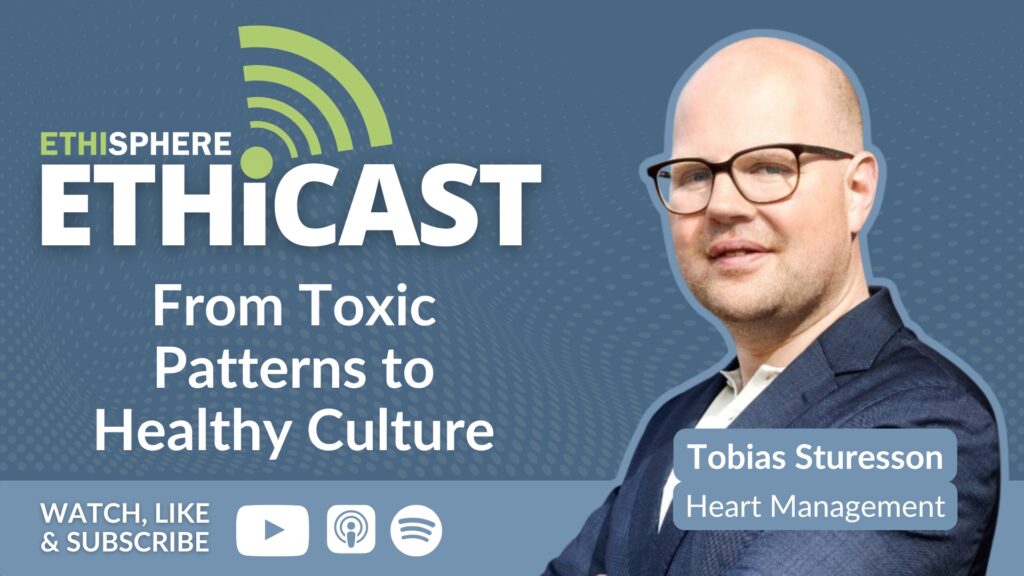
8 Ways to Elevate Ethical Culture: Ensuring Organizational Justice

AUTHOR:
Erica Salmon Byrne, J.D.
Executive Vice President and Chair of the Business Ethics Leadership Alliance (BELA)
In this series, we share insights into the eight pillars that make up a robust ethical culture. Our eight pillars seek to get at the key metrics of a strong ethical culture: Do your employees understand what is expected of them? Do they know where to go if they have questions? And, if they need help or have made a mistake, do they trust the process enough to go through with it?
In our previous posts, we’ve discussed:
- Ways to help your employees understand what is expected of them
- How to gage your employees’ perception of the effectiveness of the ethics and compliance communications and training
- What is the strength of your organization’s “speak-up” culture
- The pressure to compromise company standards in the pursuit of achieving business targets
Today’s post focuses on perceptions of organizational justice.

PILLAR FIVE:
Organizational Justice
What we aim to measure:
Colloquially referred to within Ethisphere as the “Animal Farm” pillar, this group of questions focuses on employee perceptions of whether the company holds every wrongdoer accountable, regardless of rank. It also considers the awareness of discipline and the investigation process.
In other words, are all the animals equal? Or are some of them more equal than others?
Types of questions we ask:
- I believe disciplinary actions are taken when individuals engage in unethical behavior or misconduct at the Company.
- I believe the rules and associated disciplinary actions for unethical behavior or misconduct are the same for every employee.
- If I raised a concern about unethical behavior or misconduct, I believe the Company will fully investigate it.
Why it matters:
The act of stepping forward to raise a concern is courageous. Employees want to know this act will be respected by the organization and action will be taken to properly address the concern. Perceptions of organizational justice hinge on employees believing the rules apply equitably to everyone and that no individual – regardless of stature within the organization – is above the consequences of misconduct. When an organization fails to create this sense of equality, it introduces a corrosive force that runs against efforts to establish and maintain a “speak-up” culture.
Our data shows employees who agree disciplinary actions are handled equitably are 74 percent more likely to have reported observed misconduct than participants who were unwilling to affirm such faith in equitable disciplinary measures.
When employees do not believe the organization will take the matter seriously, either through investigation or adjudication, they are forced to make a decision as to whether doing the right thing will justify the vulnerability that comes with stepping forward.
What the data says:
This pillar tends to be an area that reveals critical opportunities within organizational pockets, often determined by the strength of proactive efforts to educate the employee population about the reporting, investigations, and adjudication processes:
81 percent of surveyed participants expressed faith their company will fully investigate a reported concern about unethical behavior or misconduct.
Yet just 72 percent of participants indicate they believe disciplinary actions are taken when individuals engage in unethical behavior or misconduct at their company.
31 percent of participants did not affirm they believe the rules and associated disciplinary actions for unethical behavior are the same for every employee at their organization.
The reality is that the majority of employees are unlikely to find themselves in a position to report misconduct, participate in an investigation or be privy to the adjudication process while employed by an organization. That does not excuse an organization from making the effort to educate employees about these processes, because in that void a narrative of hearsay will become the default reality.
If it takes one instance for an organization’s reputation to experience critical damage, is it worth leaving such a determining factor about whether employees raise a concern up to hearsay?
How Ethisphere clients have used the data/insights:
The delta between the number of employees who say their organization would investigate a concern and those who are confident action would be taken varies by company but exists for every client we have worked with. The size of the delta reveals the degree to which the company needs to work to “lighten” the black box of investigations for employees to make what happens less of a mystery.
Expert tips for your program effectiveness:
- Proactively outline what to expect after reporting a concern through the various modalities available to employees.
- Make the investigator code of conduct readily available to all employee.
- Educate the employee population about the full spectrum of disciplinary actions the organization may take, not just termination, so that an employee isn’t surprised when a colleague receives coaching in response to misconduct.
- Create a simple process that allows managers to easily log any open-door report that has been brought to their attention.
As ethics and compliance leaders continue to put tremendous effort into their program, the question for many remains “is it working?” We hope these insights into our Ethical Culture assessment and data set are helpful in answering that question for you. If you are interested in taking a more detailed look at our data set of 1.1 million employee responses, contact us today to talk to our team about your ethical culture.
Have questions about ethical culture? Schedule time to talk with an Ethisphere expert, or subscribe to our “Culture Corner” newsletter to stay up-to-date on ever-changing culture trends and data.



